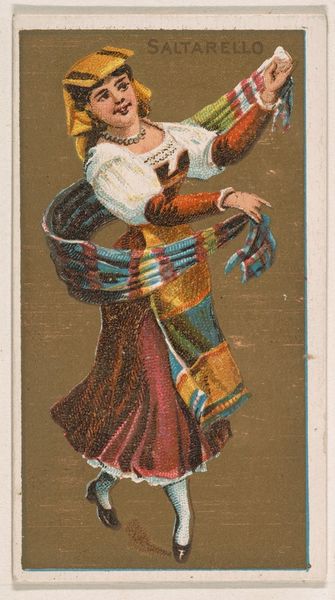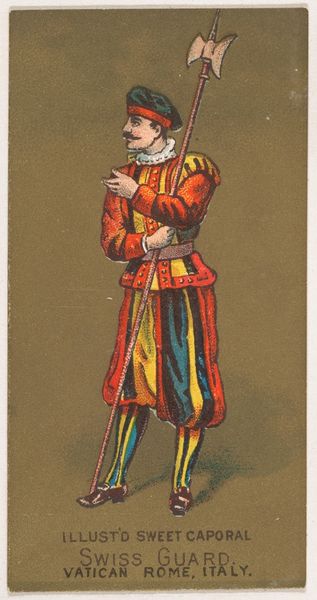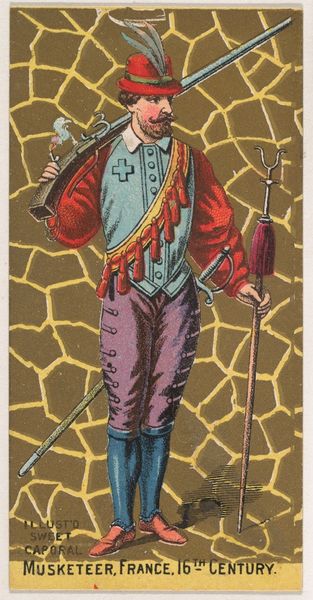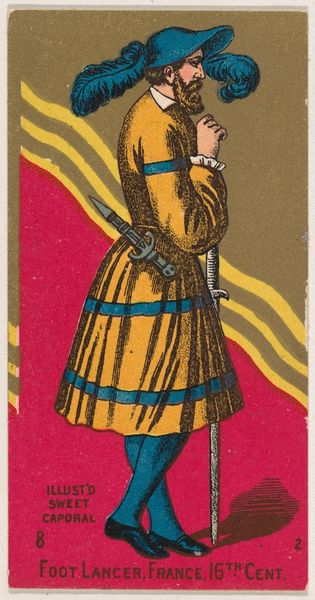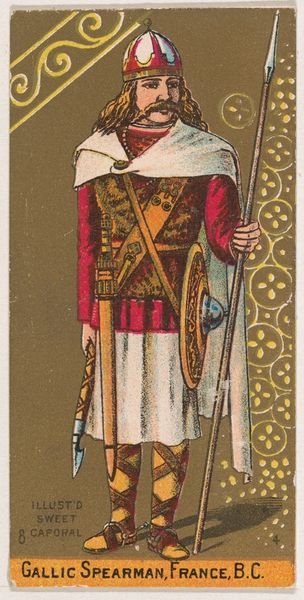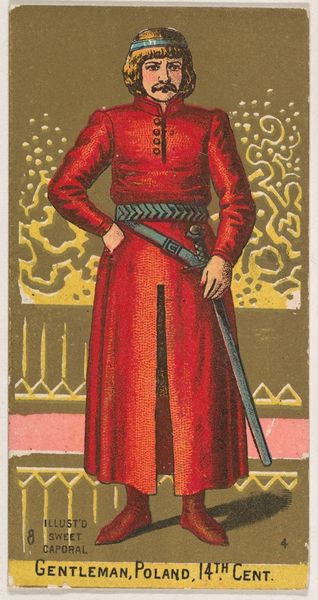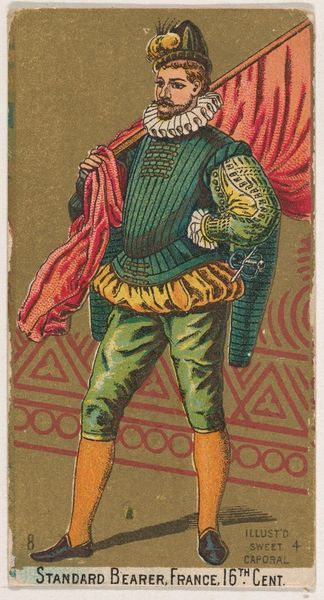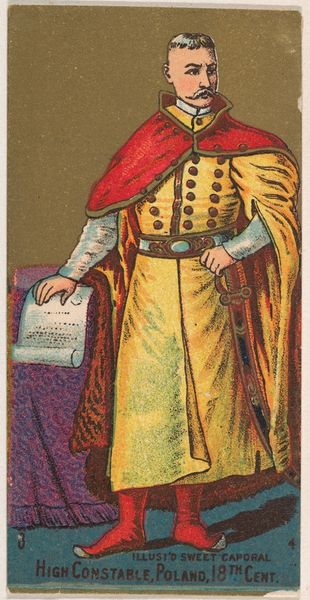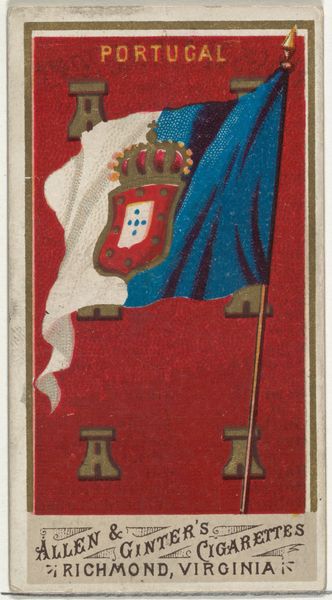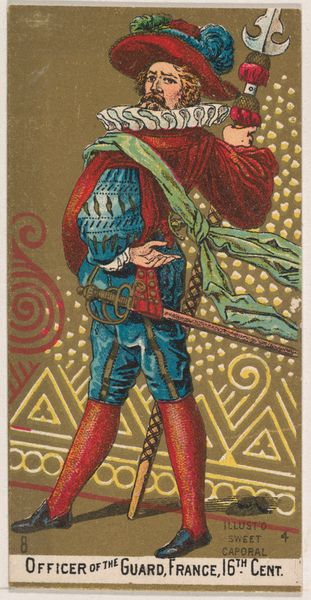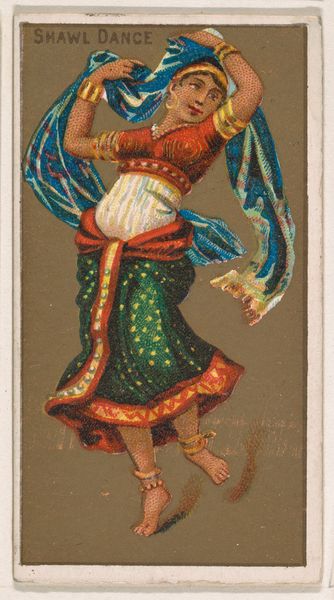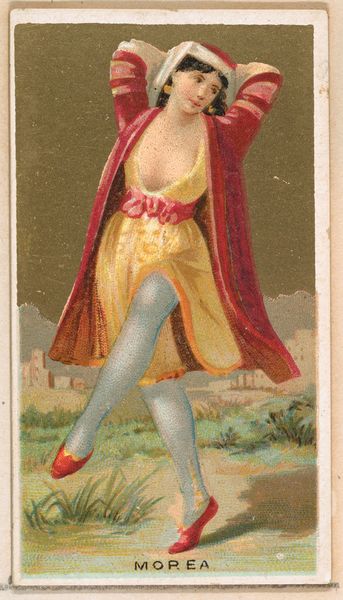
Executioner, Poland, 14th Century, from the Military Series (N224) issued by Kinney Tobacco Company to promote Sweet Caporal Cigarettes 1888
0:00
0:00
drawing, print
#
portrait
#
drawing
#
medieval
# print
#
caricature
#
caricature
#
figuration
#
men
#
watercolour illustration
#
history-painting
#
academic-art
#
sword
Dimensions: Sheet: 2 3/4 × 1 1/2 in. (7 × 3.8 cm)
Copyright: Public Domain
Editor: This is "Executioner, Poland, 14th Century," a print from 1888 by the Kinney Tobacco Company. It looks like a playing card or an advertisement. The figure is dressed entirely in red, holding a very large sword. What do you see in this piece beyond the immediately obvious? Curator: The immediate visual is indeed striking, isn't it? But let’s consider this image as a cultural artifact produced at a particular historical moment. These tobacco cards often exoticized and sensationalized historical figures and events. How does this image, likely aimed at a male audience, participate in the construction of Polish identity, or more broadly, ideas about power and violence? What might the red symbolize within this context? Editor: I guess I hadn't thought about it that way. I was mostly focused on the almost cartoonish depiction of the executioner, but you’re right, the color red is really intense, especially paired with his occupation. The title is also interesting... executioners were often marginalized individuals themselves, outcasts. Curator: Exactly. And by placing this figure within the specific context of 14th-century Poland, it evokes a whole history of conquest, resistance, and shifting power dynamics. Consider how the act of marketing tobacco relies on certain power dynamics, even oppressions in global relations, connecting to colonial histories. The choice to depict *this* figure speaks volumes, doesn’t it? How might this image also reflect anxieties or fantasies surrounding masculinity and control prevalent in the late 19th century? Editor: That gives me a lot to think about, I’d originally dismissed it as a trivial commercial object, but seeing it in terms of its cultural context and how it speaks to broader historical power struggles really changes everything. Curator: Absolutely. By analyzing such imagery, even something seemingly innocuous, we start to unpack the complex ways in which power, identity, and history are visualized and consumed.
Comments
No comments
Be the first to comment and join the conversation on the ultimate creative platform.
